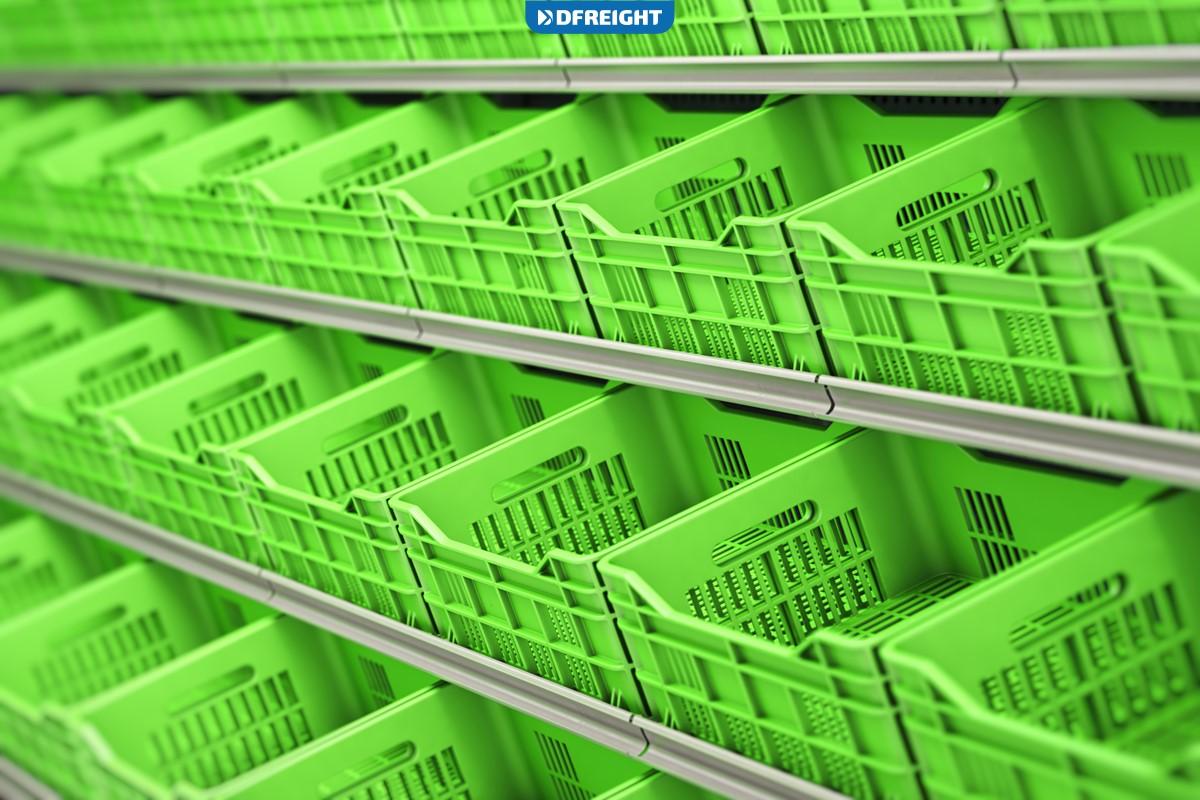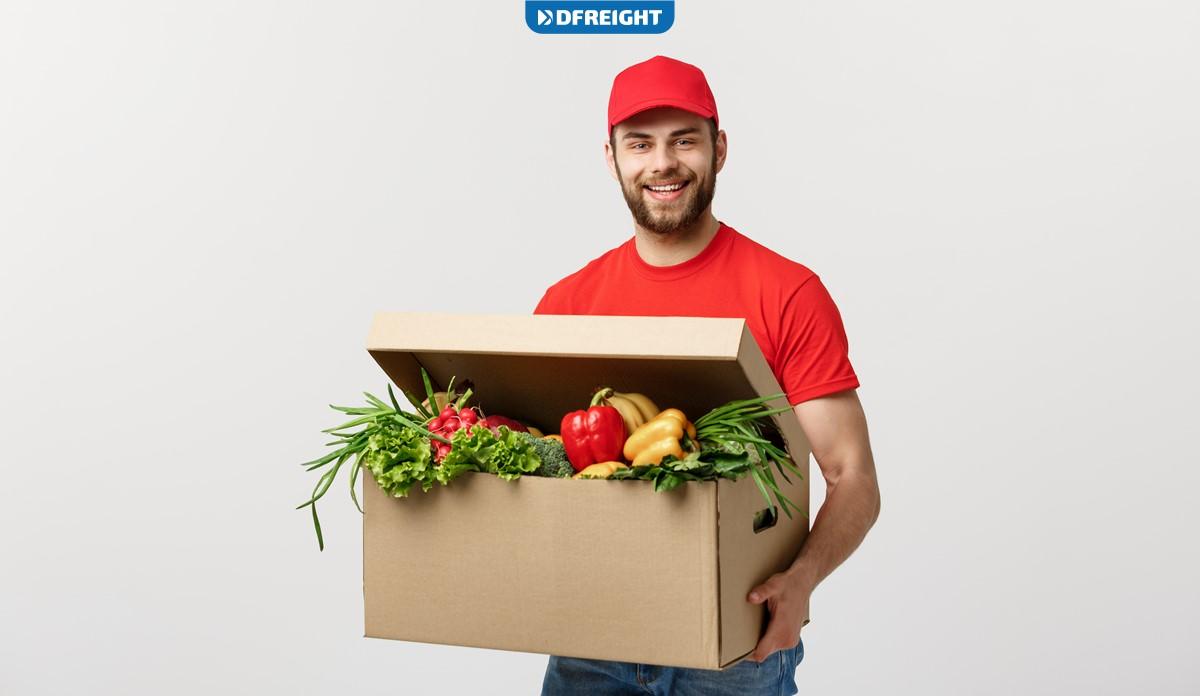In an era when farm-to-table services are highly valued and sought after, sending out fresh produce safely and efficiently is critical. Any failure to properly ship fruits and vegetables can result in significant losses and cost you your entire business, not to mention the impact on the entire food market. As a result, before embarking on any fresh produce shipments, you should take strict precautions and adhere to the standards to ensure that they arrive fresh, edible, and in perfect condition. This brief guide will walk you through the fundamentals as well as some helpful hints as you get started.
Table of Contents
Why Shipping Fresh Fruits and Vegetables Matters
There are many reasons why shipping fresh fruits and vegetables is important. Fresh fruits and vegetables are perishable items that need to be shipped quickly and efficiently in order to maintain their freshness and quality. Shipping fresh fruits and vegetables safely also helps to ensure that these items are available to consumers year-round, even when they are out of season.
Shipping fresh fruits and vegetables also helps to reduce food waste. When fruits and vegetables are shipped quickly and efficiently, they are less likely to go bad before they can be consumed. This helps to reduce food waste and ensure that these items are being used to their full potential.
Shipping fresh fruits and vegetables is also important for the economy. The shipping of these items helps to create jobs and support businesses that are involved in the transportation and distribution of these items. Shipping fresh fruits and vegetables also helps to ensure that these items are affordable for consumers.
What to Consider Before Shipping Fresh Fruits and Vegetables
When shipping fresh fruits and vegetables, it is important to use a reliable shipping company that offers refrigerated shipping services. Fruits and vegetables should be packed in clean, sturdy boxes or plastic crates with plenty of padding to protect them from bruising during transit. It is also important to pack the produce in a way that prevents it from shifting during shipping, as this can damage the fruit or vegetables.

The shipping company should also have a good reputation for delivering fresh produce in a timely manner. The shipping container should be clean and free of pests or other contaminants. The produce should be inspected before it is shipped to ensure that it is fresh and free of damage. It is important to ship fresh fruits and vegetables as soon as possible after they are harvested to ensure that they are as fresh as possible when they arrive at their destination. If you are shipping produce from a distant location, it is a good idea to ship it by air to minimize the time it spends in transit.
Key Challenges of Shipping Fresh Fruits and Vegetables
One of the biggest challenges of shipping fresh fruits and vegetables is keeping them fresh. This is especially difficult during the summer months when temperatures are high. Heat can cause fruits and vegetables to spoil quickly, so it’s important to have a cool, temperature-controlled environment during shipping.
Another challenge is keeping the fruits and vegetables from bruising or getting damaged during shipping. This can happen if the produce is not packed properly or if it is jostled around during transport. To avoid these problems, growers and shippers must take special care when packing and transporting fresh fruits and vegetables. They must also be careful to ship the produce during cooler times of the day and choose shipping routes that avoid hot, humid areas.
Reefers: Great Vehicles for Shipping Fruits and Vegetables

Refrigerated trailers, also called reefers, are ideal for transporting fresh fruits and vegetables. The controlled temperature and humidity inside the trailer keep produce fresh and prevent spoilage. Reefers also protect against temperature extremes, wind, and rain. Produce that is properly refrigerated can last up to twice as long as produce that is not refrigerated.
Most refrigerated trailers can maintain a temperature between 33 and 41 degrees Fahrenheit, and the humidity level can be set to meet the needs of the produce being transported. For example, grapes can be transported at a higher humidity level than apples.
Reefer trailers can also be equipped with either air-cooled or water-cooled refrigeration units. The type of unit used depends on the type of produce being transported, the length of the trip, and the outside temperature. Air-cooled units are less expensive to operate than water-cooled units, but they are not as effective in hot weather.
Water-cooled units are more expensive to operate, but they are more effective in hot weather. Reefer trailers are typically made of aluminum or stainless steel. Aluminum trailers are lighter and less expensive, but they are not as durable as stainless-steel trailers. Stainless steel trailers are more expensive, but they are more durable. Refrigerated trailers are an important part of the food supply chain management. They help to ensure that fresh fruits and vegetables are available to consumers year-round.
Choosing the Right Reefer Temperature for Fruits and Vegetables

The debate over the ideal reefer temperature for fruits and vegetables has been going on for years, with no clear consensus. Some experts believe that the optimum temperature is between 32 – 45 degrees Fahrenheit, while others claim that it is closer to 50 degrees. However, the majority of scientific studies seem to support the idea that the ideal reefer temperature for fruits and vegetables is between 32 and 45 degrees Fahrenheit.
One of the main reasons why the optimum reefer temperature for fruits and vegetables is between 32 and 45 degrees Fahrenheit is because this temperature range prevents the growth of bacteria. Bacteria can cause fruits and vegetables to spoil, and at high temperatures, bacteria can grow very quickly. By keeping the reefer temperature at a lower range, the growth of bacteria is slowed down, which helps to keep fruits and vegetables fresh for a longer period of time.
Another reason why the optimum reefer temperature for fruits and vegetables is between 32 and 45 degrees Fahrenheit is that this temperature range allows for the proper ripening of fruits and vegetables. When fruits and vegetables are ripe, they are at their peak flavor and nutritional value. If they are not ripe, they may be less flavorful and nutritious. However, if fruits and vegetables are too ripe, they can become overripe and start to spoil. The optimum reefer temperature allows fruits and vegetables to ripen slowly and evenly, which helps to preserve their flavor and nutritional value.
How to Transport Fresh Fruits and Vegetables in 5 Easy Steps
1. Before transporting fruits and vegetables with reefers, it is important to wash them thoroughly. This will remove any dirt or debris that could contaminate the reefers.
2. Once the fruits and vegetables are clean, they should be sorted into groups. This will make it easier to load the reefers and ensure that the fruits and vegetables are properly ventilated.
3. The next step is to load the reefers. This should be done carefully so that the fruits and vegetables are not damaged.
4. Once the reefers are loaded, they should be transported to the desired location. This can be done by truck, train, or ship.
5. Once the reefers arrive at their destination, the fruits and vegetables should be unloaded and stored properly. This will help to keep them fresh and prevent them from spoiling.
Find a Reliable Refrigerated Shipping Service for Fruits and Vegetables
There are a few things to consider when looking for refrigerated shipping service for fruits and vegetables. First, you should make sure the company is reliable and has a good reputation. You can check online reviews to get an idea of what other customers have said about their experience with the company. Second, you must make sure the company offers timely service. You don’t want your fruits and vegetables to sit in a shipping container for days or weeks on end. Make sure to ask the company how long it will take to ship your order. Finally, you want to make sure the company offers competitive rates. Get quotes from several different companies before making a decision.
If you need help with transporting your fresh fruits and vegetables overseas or inside the UAE, contact us at DFreight to get a free consultation. Our shipping experts are ready to give you a hand.
Why is shipping fresh fruits and vegetables important?
Shipping fresh fruits and vegetables is important because it helps to preserve the freshness and quality of these items. It also helps to reduce food waste and ensure that these items are available to consumers year-round.
What are some things to consider before shipping fresh fruits and vegetables?
When shipping fresh fruits and vegetables, it is important to use a reliable shipping company that offers refrigerated shipping services. The produce should be packed in clean, sturdy boxes or crates with plenty of padding to protect it from damage during transit.
What are some of the key challenges of shipping fresh fruits and vegetables?
One of the key challenges of shipping fresh fruits and vegetables is maintaining freshness, especially during hot summer months. Another challenge is preventing bruising and damage to the produce during shipping.
What is the ideal reefer temperature for fruits and vegetables?
The optimum reefer temperature for fruits and vegetables is between 32 and 45 degrees Fahrenheit. This temperature range prevents the growth of bacteria and allows for the proper ripening of fruits and vegetables.
How can I find a reliable refrigerated shipping service for fruits and vegetables?
When looking for a refrigerated shipping service for fruits and vegetables, consider the company’s reputation, timeliness, and rates.
Are there any special requirements for shipping fresh fruits to Turkey?
Yes, it is important to check and comply with the Turkish government’s regulations on shipping to Turkey process. Additionally, you should make sure that the packaging for the fruits is suitable for the climate of the country it is being shipped to.














